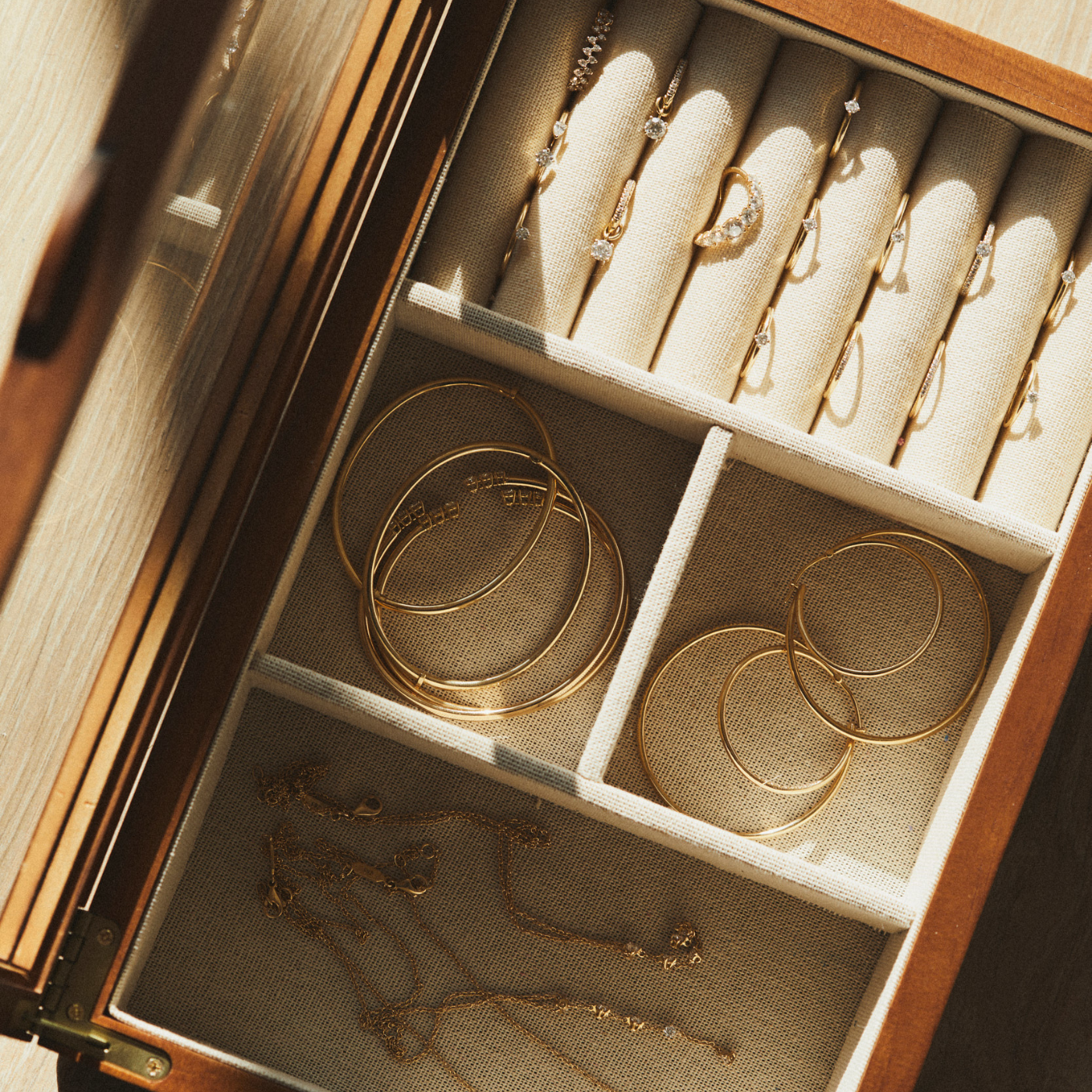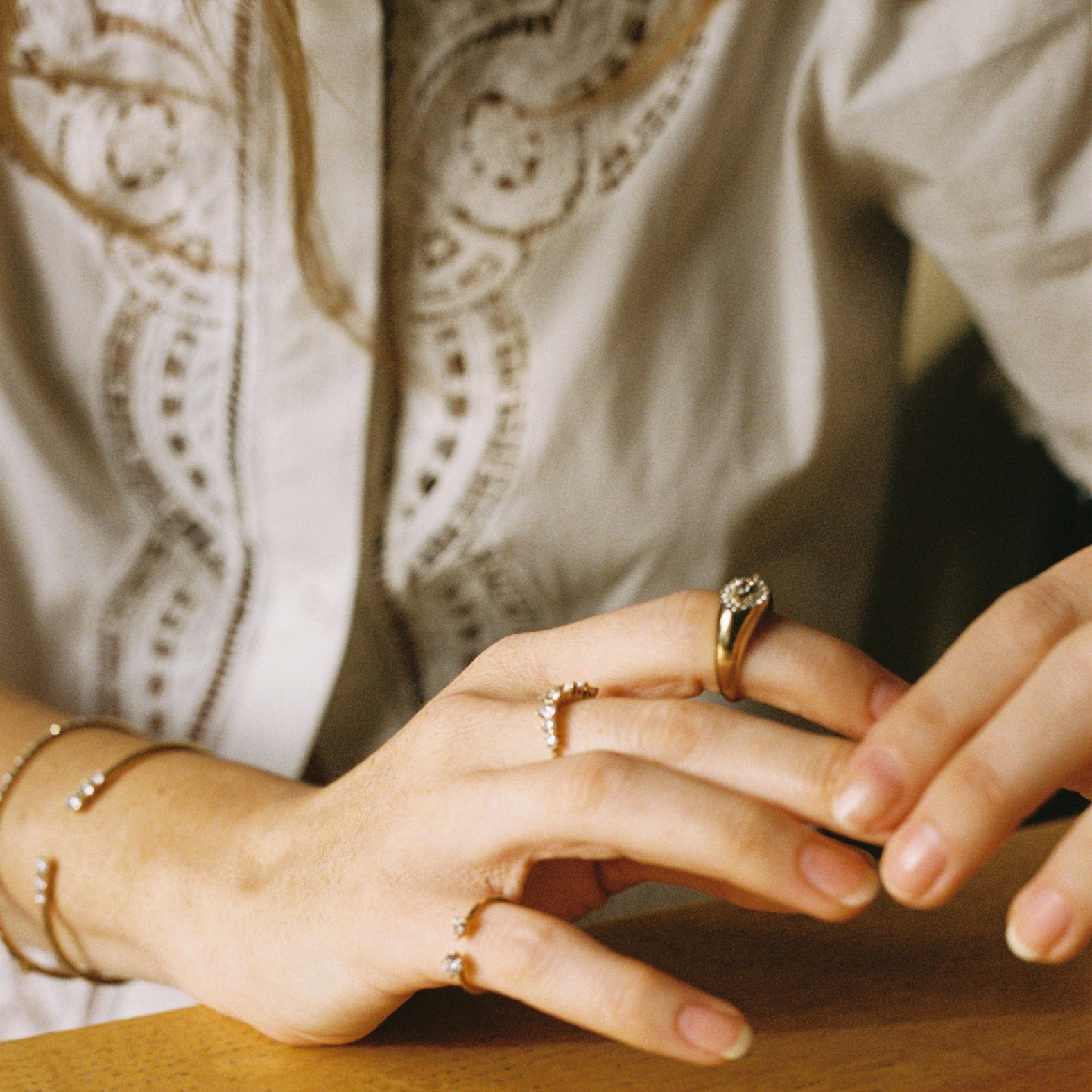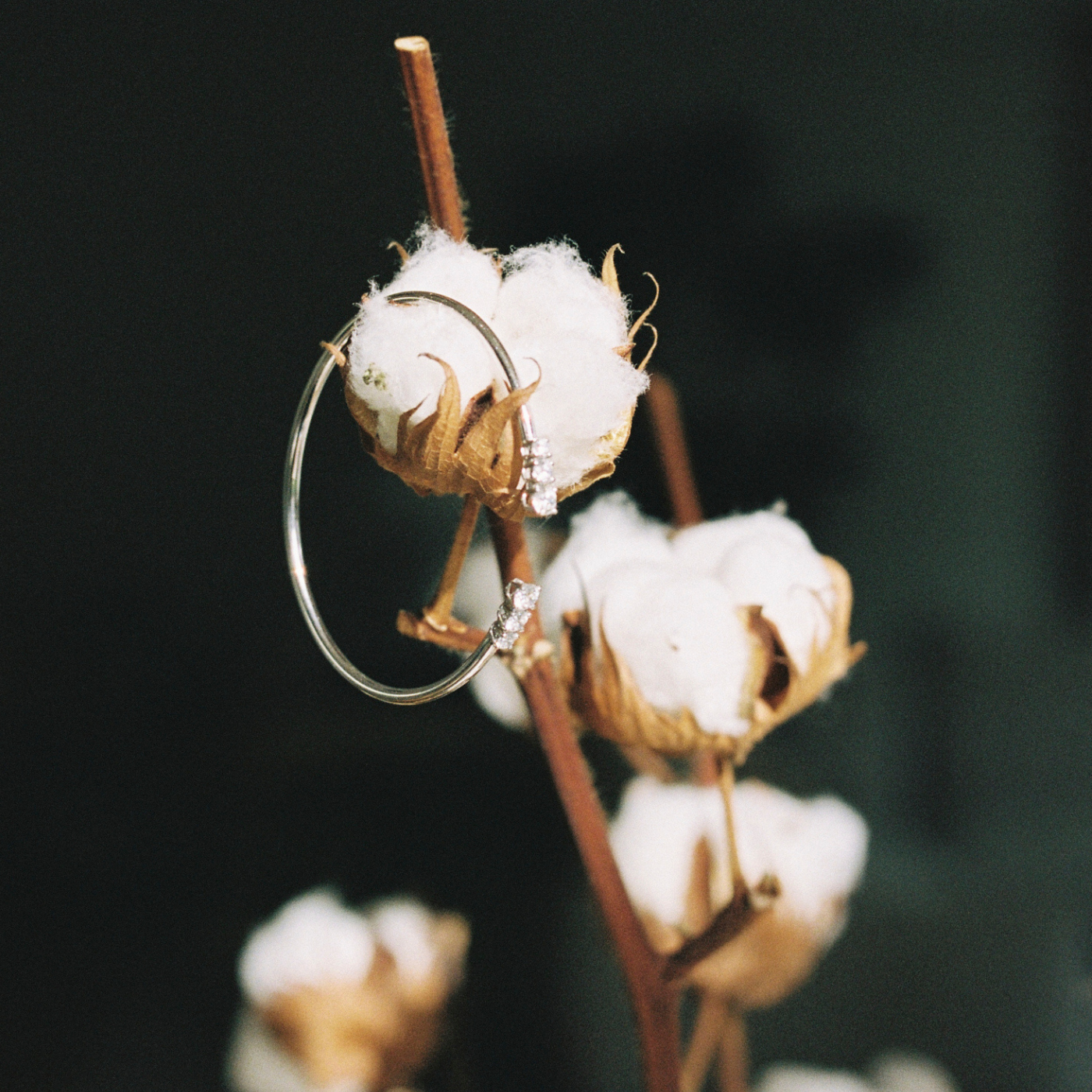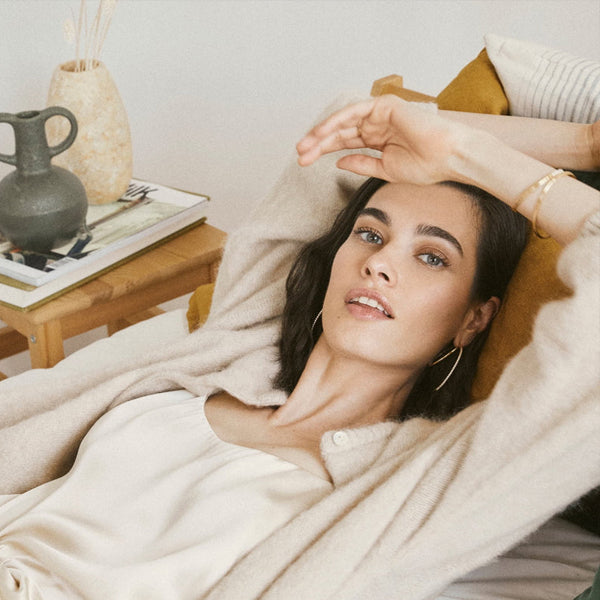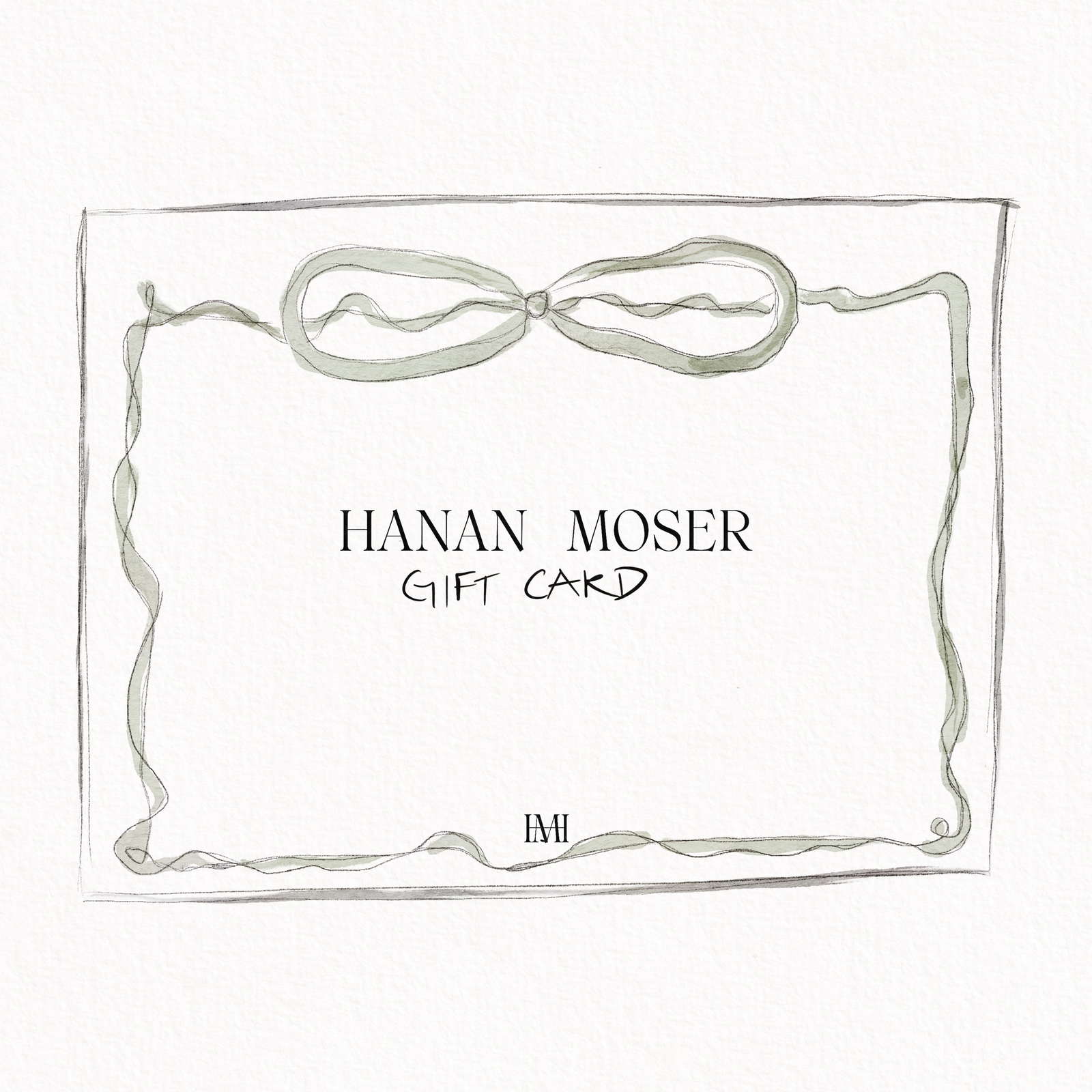In a world that’s moving towards being more eco-friendly, there are so many little things we can do to reduce our impact on the planet. Sustainability is fast becoming a demand in the fashion world, and by seeking more conscious options, we’re standing up for our environmental responsibility. That’s why we love the Japanese art of Kintsugi, which is the idea that broken items can always be repaired. This movement has been championing sustainability for hundreds of centuries, embracing the mindset that ‘the best things are made to last’. Here’s our guide to Kintsugi and how it can impact your sustainable lifestyle.
Kintsugi meaning: what does it symbolize?
Kintsugi 金継ぎ is the Japanese art of repairing broken ceramics by using gold to bind the broken pieces back together. It’s a planet-friendly approach that focuses on repairing rather than replacing, with the philosophy that the repairs are not meant to be hidden but embraced as part of the object’s rich and detailed history. Those who practice Kintsugi say that displaying the repairs (made with Japanese gold) adds character and value.
Kintsugi comes from Japan but is practiced worldwide–not just literally but also as a concept for embracing imperfections and finding beauty in our flaws. During the COVID-19 pandemic, people found comfort and meaning in Kintsugi as a metaphor for rebuilding after loss.
How can I practice Kintsugi in my own life?
Although traditionally used to repair pottery, Kintsugi is also a much broader metaphor for living more sustainably and one that we can apply to our daily lives. The meaning behind Kintsugi encourages careful consideration before deeming something as useless—a crucial message in societies that are striving to be more eco-friendly.
Here are four ways of practicing Kintsugi in your life, through repairing or repurposing things to contribute to a more sustainable lifestyle.
Repairing Clothes
In a world of fast fashion, where we’re just a few clicks away from the latest affordable trends, it’s never been easier to update your wardrobe as each season passes by. Unfortunately, trends come and go, and cheaply produced clothes aren’t made to last (fast fashion is also a massive contributor to global pollution and exploitation of workers). Kintsugi focuses on the mentality of ‘repair instead of replace’, which we can apply to our own fashion consciousness.
To avoid getting sucked into the trap of fast fashion, here are some of our top tips:
Buy quality clothes and jewelry
Items that are high quality are made to last, making them a much more sustainable option. When you buy quality, the chances of the item getting broken or deteriorating quickly are vastly reduced. What’s more, high-quality items such as clothes or jewelry are often hand-crafted and made with love, like our little pieces, making them more precious and unique.
Shop HANAN MOSER sustainable fine jewelry
Learn to make basic repairs to your own clothes
Quality clothes will last for longer, but nothing lasts forever! By learning very basic repairs, like sewing buttons, fixing torn seams and zips, and patching holes, you can give your clothes a new zest of life.
Buy Vintage
Vintage clothes are not only extremely unique, but they’re often timeless too. Buying pre-loved clothes is a great environmental move, guarantees an individual look, and more often than not, you’re supporting an independent business. Vintage clothes have often been reworked, too, adding character in true Kintsugi style.
Donate, donate, donate!
Clothes inevitably do have a lifespan, and when they are beyond repair, it’s time to throw them out. Make sure you drop them off at your local charity shop or a clothes donation point. They may be resold, donated, or broken down so the materials can be reused to make new clothes.
Upcycling Furniture
Upcycling is the process of using old materials to create something of more interest or higher value. By taking something old and creating something totally new, upcycling is incredibly beneficial to the planet while also resulting in a unique item that’s more valuable than before.
Here are some of our ‘easy to do’ upcycling ideas for old furniture:
Reupholster a chair
A new piece of fabric can transform a tired-looking chair, and it’s simple to do! If the new fabric is darker than the original, you can simply fix the new fabric on top. Reupholstering is even simpler than you think—there’s no need for a sewing machine here; you simply need a staple gun. Here is a simple how-to guide.
A lick of paint goes a long way!
Old, dark furniture can feel oppressive and worn. Instead of replacing it with something shiny and new, brighten up your existing furniture by applying a couple of coats of a bright shade of your choice to really make it stand out!
For those who are a little handier
If you’re confident with a saw, the opportunities for upcycling are endless. A large table that takes up a lot of space can be transformed into a coffee table by cutting the legs. Alternatively, create shelves by using almost any spare wood or old wooden furniture you no longer need. Get creative!
Repurposing smaller items
Before you throw away smaller items around the home, like jars, packaging, and cookware, ask yourself if there’s a way you can repurpose these around your home. Not only is it eco-friendly, but you’ll also save yourself some money!
Glass bottles make excellent vases
Any glass bottles you have lying around can easily be repurposed as a vase. A variety of sizes creates a nice stacked look, and the opportunities to paint and decorate the bottles allow you to get creative and add a personal touch to your home.
Store your spices or make a gift jar
Before throwing away used glass or plastic containers, think about how they can be used to store items around your kitchen. Jars are particularly useful for presenting seasonal gifts for family and friends, such as homemade jelly, sauces, or beauty products like body butter.

Planting seeds
If you've got green fingers, don’t waste money buying plastic pots for your seeds. Instead, you can use almost any plastic or paper container you have in the house. For example, yogurt pots, paper or styrofoam coffee cups, and plastic glasses all work as excellent vessels to grow your little pots of joy. Just cut some holes in the bottom, add your soil, and you’re ready to plant your seeds and watch them grow!
Cooking
The concept of Kintsugi can be applied to how mindful we are of food waste. It’s easy to lose track of what’s in the fridge until it’s too late, so here are some tips for being sustainable with your fresh produce.
Making soups from leftover veggies
If you’ve overshopped on vegetables this week, and they’re rapidly approaching the end of their lifespan, don’t let them go to waste! Trying to find individual recipes or inspiration to use up your veggies is hard work. Instead, throw them together and make homemade soup.
Save those seeds!
When cooking with vegetables, don’t throw away the seeds. Instead, try planting them using a homemade plant pot that we mentioned above. It takes a bit of trial and error, but once you get it right, you’ll be growing your new veggies from your old ones in no time. Tomatoes, green beans, and peas are some of the easiest vegetables to try growing at home.
Make banana bread
Are your bananas starting to look slightly past their best and not very appealing to eat? At this stage, they’re perfect to mush down and use in a recipe for your favorite banana bread.
The Kintsugi approach can be applied in many ways to your daily life. Sometimes all it takes is a little creativity and some careful consideration before deciding that an item is ‘useless’. As we all take steps to live more sustainably, Kintsugi allows us to reframe what we consider beautiful and find character and value in almost anything.


